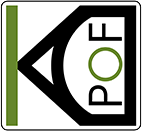KDPOF proudly announced that their well-proven KD1053 PHY IC and integrated KD9351 FOT (Fiber Optic Transceiver) have been implemented by Renesas, a premier supplier of advanced semiconductor solutions, into the new next generation automotive vehicle computer VC4. This comprehensive communication gateway ECU from Renesas features the newest automotive network technologies and sufficient computing power to host the ever-increasing number of user applications. “With the VC4, we have integrated an optical Ethernet interface into our automotive evaluation boards for the first time,” stated Tobias Belitz, Principal Engineer at Renesas. “KDPOF shared their 1000BASE-RH transceiver KD1053 and KD9351 FOT according to IEEE 802.3bv with us, which also covers the wide temperature range we are looking at.”
KDPOF congratulates the 802.3cz Task Force for the advance of the proposed IEEE 802.3cz standard to the IEEE 802.3 Working Group ballot stage. “We are happy that the IEEE 802.3 automotive optical multi-gigabit technically complete standard draft has entered the Working Group ballot stage,” stated Carlos Pardo, KDPOF CEO and active participant in the IEEE 802.3 working group. Read more
KDPOF presents the new extensive evaluation kit EVK9351AUT for a quick and easy project launch of optical gigabit connectivity in vehicles. “Our new EVK9351AUT equips carmakers, suppliers, and test houses to fully evaluate the KDPOF automotive transceivers KD9351 and KD1053 for automotive optical 1000BASE-RHC PHY implementation,” explained Carlos Pardo, CEO and Co-founder of KDPOF. “We thus support our recently announced new integrated KD9351 Fiber Optic Transceiver (FOT) for comprehensive evaluation.” Read more
KDPOF proudly announces that Funzin, software development and edge AI solution company, have integrated their KD1053 IC and integrated KD9351 FOT (fiber optic transceiver) in the new Funzin AIoT Platform “FAIP 3.0” and Edge AI Device “Photon” for automotive. “An automated driving car requires networks capable of controlling and processing a great deal of sensor data,” explained Ms. Deuk Hwa Kim, CEO/President of Funzin. “Our automotive network solution features an Ethernet backbone environment based on plastic optical fiber (POF) to eliminate electronic wave interference.” Read more
Together with several industry leaders, KDPOF is working on an optical automotive multi-gigabit system that will fulfill the needs of future connected and automated vehicles. Instead of various port components, the new solution provides a single, complete package. “As the auto industry approaches the 50 Gb/s*m speed-length threshold, the move from copper to optical physical data transmission media is becoming mandatory,” stated Carlos Pardo, CEO and Co-founder of KDPOF. “Optical is the engineering-wise path for higher data rates.” The new connector systems are very small, lightweight and extremely inexpensive compared to the previous ones. With the comprehensive EVK9351AUT evaluation kit, automotive manufacturers and suppliers can already test the new configuration at 1 Gbit/s today. KDPOF thus supports easy project entry into optical gigabit connectivity for a secure Ethernet backbone and ADAS sensor connections in vehicles. Read more
The new integrated KD9351 Fiber Optic Transceiver (FOT) from KDPOF further reduces costs for optical in-vehicle networks at 1 Gb/s. Incorporating the transmit and receive optoelectronics into one single component, the KD9351 is an optical transceiver for 100 Mb/s up to 1 Gb/s with a small footprint. “Compared to STP (shielded twisted pair of copper wires), the combination of the new KD9351 FOT with the continuing KD1053 IC cuts the cost for 1 Gb/s by 30 percent,” explained Carlos Pardo, CEO and Co-founder of KDPOF. “The new integrated device provides enhanced efficiency and flexibility. It thus paves the way to optical multi-gigabit Ethernet in the vehicle.” Applications for the new KD9351, with competitive pricing for EMC critical or galvanic isolated critical links, include safe Ethernet backbones and sensor links for advanced driver assist systems (ADAS).
KDPOF Provides Efficient Optical Technology for Safe Backbone and ADAS Sensor Links in Vehicles
KDPOF significantly lowers costs for the new KD9351 by constructing the transimpedance amplifier, photodiode, LED driver, and LED as one single device. Additional benefits are a shorter supply chain and no test duplication with the final test at the Tier1. Furthermore, the assembly of the FOT and the existing KD1053 IC is simplified and the connector offers snap-fit without soldering. The KD9351 reuses low-cost MEMs encapsulation and allows SMD reflow assembly with 8 by 7 mm LGA components. It is fully shielded against electromagnetic radiation. Fiber connection is done with a very simple plastic connector placed on top. The temperature range, from -40 °C to +105 °C, conforms with harsh automotive environmental requirements. The FOT withstands motor conditions with a vibration class of V2. Additionally, the device endures water without sealing. EMC performance is excellent even with the ECU shield case removed, as shielding is integrated into the PCB component. Optics implement Tx and Rx lenses. Samples are already available.
KDPOF presents the brand new integrated Fiber Optic Transceiver (FOT) KD7051. It is the first device for optical in-vehicle connectivity that incorporates the transceiver IC, optoelectronics, and optics. The integrated FOT is a 100 Mb/s optical port in one single component. “By constructing the ASIC IC, photodiode and LED as one single device, we significantly reduce cost and footprint for automotive Ethernet connectivity at 100 Mb/s,” stated Carlos Pardo, CEO and Co-Founder of KDPOF. “The decreased number of parts also reduces the effort in testing and qualification.”
Cost and Size Reduction by Integrating Transceiver IC, Optoelectronics, and Optics into One Fiber Optic Transceiver
KDPOF’s new KD7051 thus substantially reduces the overall expense compared to STP (shielded twisted pair of copper wires). Further advantages are no margin stacking between links in the supply chain and supply chain simplification. Consequently, it offers competitive pricing for EMC critical or galvanic isolated critical links. Applications include battery management systems, camera and sensor links, fast Ethernet links and smart antenna links.
All New Physical Layer
KDPOF’s new transceiver IC KD7051 offers a complete new FOT design. It reuses low cost MEMs encapsulation and allows SMD reflow assembly with 8 by 7 mm LGA components. The FOT is fully shielded against electromagnetic radiation. Fiber connection is done with a very simple plastic connector placed on top. The temperature range, from -40 °C to +105 °C, conforms with harsh automotive environmental requirements. With a vibration class of V2, it withstands motor conditions. Additionally, the device endures water without sealing. EMC performance is excellent even with the ECU shield case removed, as shielding is integrated into the PCB component. The assembly of the FOT and the IC in the PCB is simplified. Optics implement Tx and Rx lenses. The first prototypes are available.
Simple Implementation
As a plastic optical fiber with a large diameter, POF is more cost-effective to manufacture and install: installation is just easy plug and play; winding and clamping is similar to copper cables. Moreover, during the car assembly, the optical harness can be installed in the same process as the copper harness. POF has been present in vehicles for more than 10 years and is installed in millions of cars.
KDPOF has conducted a study examining the influence of home networking on online gaming and video streaming. For online gaming, the delay between an action the player intends to perform in the game and its actual effect on the screen can totally ruin the experience. Among gamers, this latency is known as ping or lag. The action issued by the player has to go through different network segments until it reaches the game server; it is then processed and the response travels back to the gamer. Numbers over 150 ms are a total no-go experience while being under 20 ms is considered a very good behavior.
KDPOF Study Reports Significant Effect of Home Networking on Online Gaming Experience
“There are three main segments that can influence the latency level: online game servers, access network, and home networking,” explained Carlos Pardo, CEO and Co-founder of KDPOF. “Our study showed that the home network plays a key role in the whole experience. Average values as low as 1 ms and up to 30 ms could be found.” A good solution is wired connectivity over plastic optical fiber (POF). It provides very low latency and jitter, just like Ethernet wiring but without visible cabling installed.
The Importance of Low Latency for Home Networks
The number one home network technology used nowadays in any home is Wi-Fi. Unfortunately, it provides little control over when each node has access to the air. Any packet loss is not noticeable for services such as web browsing, but when delivering video related services, these crashes generate peaks of latency. Those packets need to be retransmitted, extending the time required to reach the other end. If a device in the same environment is connected over Ethernet directly to the access router, the picture changes significantly. “It is not surprising that gamers prefer to connect over wires rather than Wi-Fi due to these effects,” added Carlos Pardo. “Delays are getting even worse with the rapid increase of multiple Wi-Fi access points of Wi-Fi mesh in the home.”
Plastic Optical Fiber Combined with Wi-Fi
Since wired connectivity adds only negligible latency to the path, it is recommended over wireless for the in-home portion. With its ease of installation, lack of aesthetic impact, robustness, and stability, plastic optical fiber is the ideal solution to contribute to a perfect online gaming experience. The ultimate home network solution is one that combines the advantages of a POF backbone with Wi-Fi access points throughout the home. It secures 1 Gb/s speed to each access point, avoiding any loss inherently present with wireless due to distance, walls or interference. While Wi-Fi links provide latencies on the level of milliseconds, POF is on the level of microseconds, i.e. 1000 times better.
POF can easily be installed in any duct throughout the home: power, coaxial, or telephone conduits, or easily hidden on walls, under carpets or through false ceilings. Devices that connect to the network via Wi-Fi will continue to use that connection, but will enjoy the dedicated 1 Gb/s speed of the POF network. This way, Wi-Fi speed experienced anywhere in the home is the same as next to the router.
Aukua Systems Inc., provider of Ethernet test and monitoring solutions, and KDPOF are proud to announce the success of their technology partnership for ISO 21111 standardization. Recently, two additional sections, ISO 21111-3:2020 and ISO 21111-5:2020, of the international in-vehicle Ethernet ISO standard series 21111 have been published. “By providing their MGA2510 Ethernet Test and Monitoring Platform, Aukua Systems have supremely equipped the test setup for ISO certification,” stated Carlos Pardo, CEO and Co-founder of KDPOF.
Successful Technology Partnership Results in ISO Standard for Optical In-Vehicle Gigabit Connectivity

Suds Rajagopal is Co-Founder of Aukua Systems
KDPOF supports the test ecosystem to make sure that ECUs including their technology will be tested by recognized test houses and based on the ISO standard. “We are delighted to support the overall standard for optical gigabit connectivity in vehicles with ISO 21111 complementing the existing IEEE Std 802.3bvTM,” added Suds Rajagopal, Co-Founder at Aukua Systems. “By leveraging Aukua’s test solutions, carmakers and Tier1s now have access to a complete, compatible, and interoperating implementation based on these standards.”
ISO 21111 Standardization
For reliable implementations of systems that implement in-vehicle Ethernet Optical 1 Gb/s as a physical layer, International Organization for Standardization (ISO) has added two new sections to the in-vehicle Ethernet series 21111: ISO 21111-3:2020 specifies additional features to IEEE 802.3bv, such as wake-up and synchronized link sleep algorithms. ISO 21111-5:2020 specifies requirements at the system level and a complete conformance and interoperability test plan for ECU providers that implement optical 1 Gb/s physical layer as specified in ISO 21111-3.
About Aukua Systems
Aukua Systems Inc. is a leading provider of Ethernet testing and visibility solutions. Whether developing, validating, deploying, supporting or managing applications or networks, their products help improve performance and make networks more secure. The Aukua product line includes packet capture tools, analyzers, traffic generators, and impairment emulators. Since 2015, equipment manufacturers, semiconductor companies, automotive OEMs and Tier1’s, large enterprises, service providers, and government agencies worldwide have depended on Aukua to build stronger networks.
Granite River Labs (GRL), a global leader in engineering services and test solutions for connectivity and charging, and KDPOF announced that a specification for 1 Gb/s optical connectivity in vehicles has been adopted by the International Organization for Standardization (ISO).

Vamshi Kandalla is Executive Vice President and General Manager of Granite River Labs
“GRL is proud to support ISO-standardized Gigabit Ethernet POF (GEPOF) test services and automated test solutions,” said Vamshi Kandalla, Executive Vice President and General Manager of Granite River Labs. “Extending our automotive ethernet testing profile further supports automotive hardware developers, including ECU vendors, to confidently deploy robust, interoperable products and technologies.”
“With ISO standardization of GEPOF, we and GRL jointly provide the network technology to enable new and emerging connected car technologies,” added Carlos Pardo, CEO and Co-Founder of KDPOF. “Carmakers and Tier1 suppliers benefit from integrated, compatible, and interoperable implementation based on our KD1053 IC and GRL’s competencies to perform conformance tests.”
ISO 21111 Enables Standardized Design and Testing of Optical Gigabit Networks
ISO published two new standards for in-vehicle Ethernet series 21111, forming the basis for reliable implementations of systems that realize in-vehicle 1 Gb/s Optical Ethernet as a physical layer. ISO 21111-3:2020 specifies additional features to IEEE 802.3bvTM, such as wake-up and synchronized link sleep algorithms. ISO 21111-5:2020 specifies requirements at the system level and a complete conformance and interoperability test plan for electronic control unit (ECU) providers that implement an optical 1 Gb/s physical layer as specified in ISO 21111-3.
About Granite River Labs
The world’s leading Engineering Services and Test Automation Solutions firm for connectivity and charging, GRL helps engineers solve tough design and validation challenges. GRL began in 2010 with a vision to provide affordable test services to help hardware developers implement digital interface technologies as they become faster, more complex, and more challenging to test. Today, GRL has worked with hundreds of companies supporting the adoption of new and emerging technologies from their worldwide test facilities and R&D centers. For more information, please see www.graniteriverlabs.com.
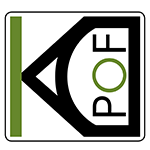
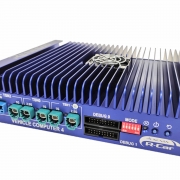 Renesas
Renesas
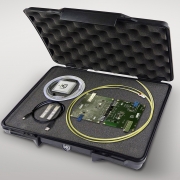
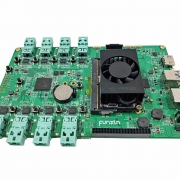 Funzin
Funzin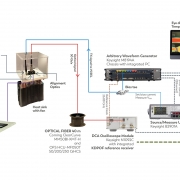
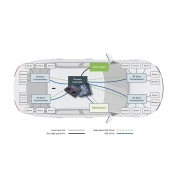 KDPOF
KDPOF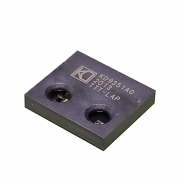
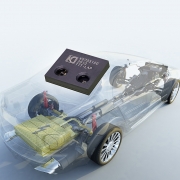 GettyImages
GettyImages shutterstock.com
shutterstock.com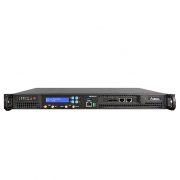 Aukua Systems
Aukua Systems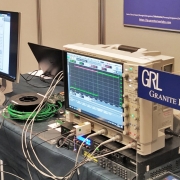 KDPOF
KDPOF